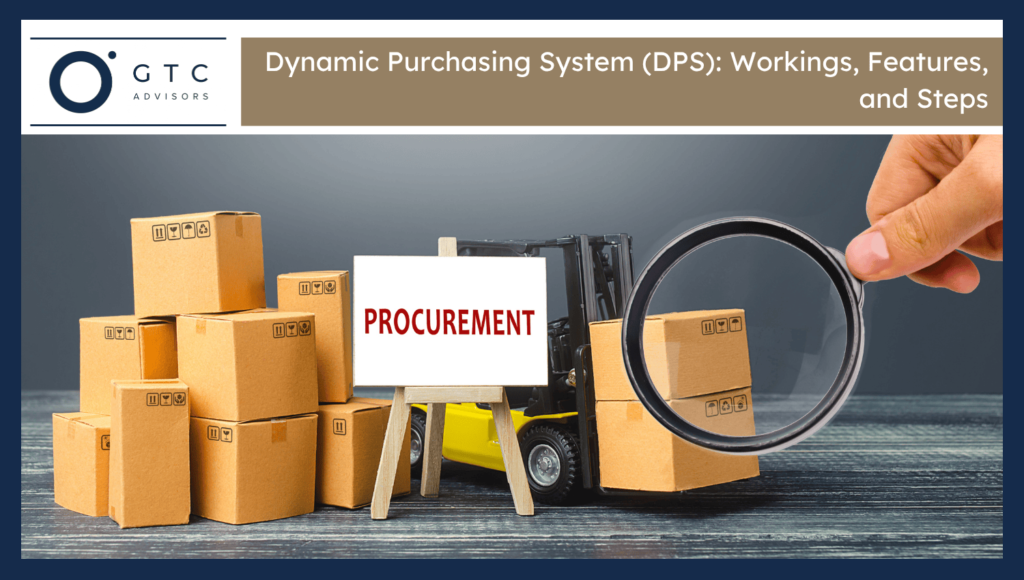The Dynamic Purchasing System (DPS) is an entirely electronic procurement procedure. It is applied to commonly bought goods, services, or works. DPS enables a buyer in the public sector to view a list of suppliers that have been pre-qualified. It remains open to the addition of new suppliers all the time. It is the key difference compared with the conventional frameworks. The system encourages flexibility and competition. It is best suited for rapidly changing markets. Communication is entirely electronic. Suppliers are required to satisfy predetermined requirements to join. DPS aids in making purchasing more efficient without closing the doors. It facilitates openness and effectiveness in procurement policies.
How Does DPS Work?
Here are the four components that show how a Dynamic Purchasing System (DPS) works:
- Public Advertisement: The DPS opportunity is advertised using official means. It makes sure that everyone knows and that everyone can apply. It starts with transparency.
- Open Supplier Applications: The suppliers are allowed to apply to become members of the DPS at any time. Its running entry maintains competition and lets the new vendors get access regularly.
- Automatic Qualification: An electronic assessment of the suppliers is made following specific criteria. Once they satisfy the requirements, they are directly included in the qualified list.
- Mini-Competitions for Contracts: Suppliers are invited, by Buyers, to submit tenders based on certain requirements. These small competitions make sure that there is a fair price and effective delivery.
What are the Key Features of DPS?
Here are the four main features of the Dynamic Purchasing System (DPS):
- Fully Digital System: The whole entry process in the procurement is online. The registration of suppliers, their qualification, and bidding occur via a secure digital platform that saves time and also makes it accessible.
- Ongoing Supplier Access: New Suppliers can apply at any time in the DPS lifecycle. It helps to promote constant competition and access to a broader variety of vendors.
- Two-Stage Process: DPS has a systematic approach. The initial phase filters eligible suppliers, and the second one sets up mini-competitions to offer certain contracts. It maintains procurement effectiveness and equity.
- Fair and Transparent: Equal treatment is guaranteed by standardised procedures and automated processing. The transparency can be achieved by having clear rules and audit trails to enhance trust among all parties.
What are the Steps to Implement a DPS?
Here are the four main steps involved in the Dynamic Purchasing System (DPS):
- Planning & Need Assessment: The organisation specifies its procurement objectives, understands market conditions and ensures that a planned good or service fits DPS. This stage involves the development of clear specifications and a strategy.
- Publish Contract Notice: The notice of a contract appears on an official procurement site. It contains specific details regarding the scope of the DPS, which enables every interested and qualified supplier to apply without restrictions.
- Supplier Application Phase: Suppliers make electronic applications, which are evaluated as per established criteria like technical capabilities and financial position. Any supplier who fulfils the requirements is welcome on board and registered in the system.
- Awarding Contracts via Call-Offs: Contracting authorities call on qualified suppliers to put in tenders through mini-competitions. Award of contracts is based on the pre-specified evaluation criteria, ensuring fairness, transparency, and driven procurement decisions.
What are the Benefits of Using DPS?
Here are the four benefits of using a Dynamic Purchasing System:
- DPS helps innovation by enabling entry to new players and new solutions throughout the lifetime of the system.
- DPS enhances the competition because it remains open to new suppliers, promoting bigger involvement and improved offers.
- It is flexible as they do not have a predetermined list of suppliers, and they can pick and choose depending on their needs at the present time.
- The procurement process is quicker, and simplified mini-competitions after the initial qualification are possible because of digital processing.


